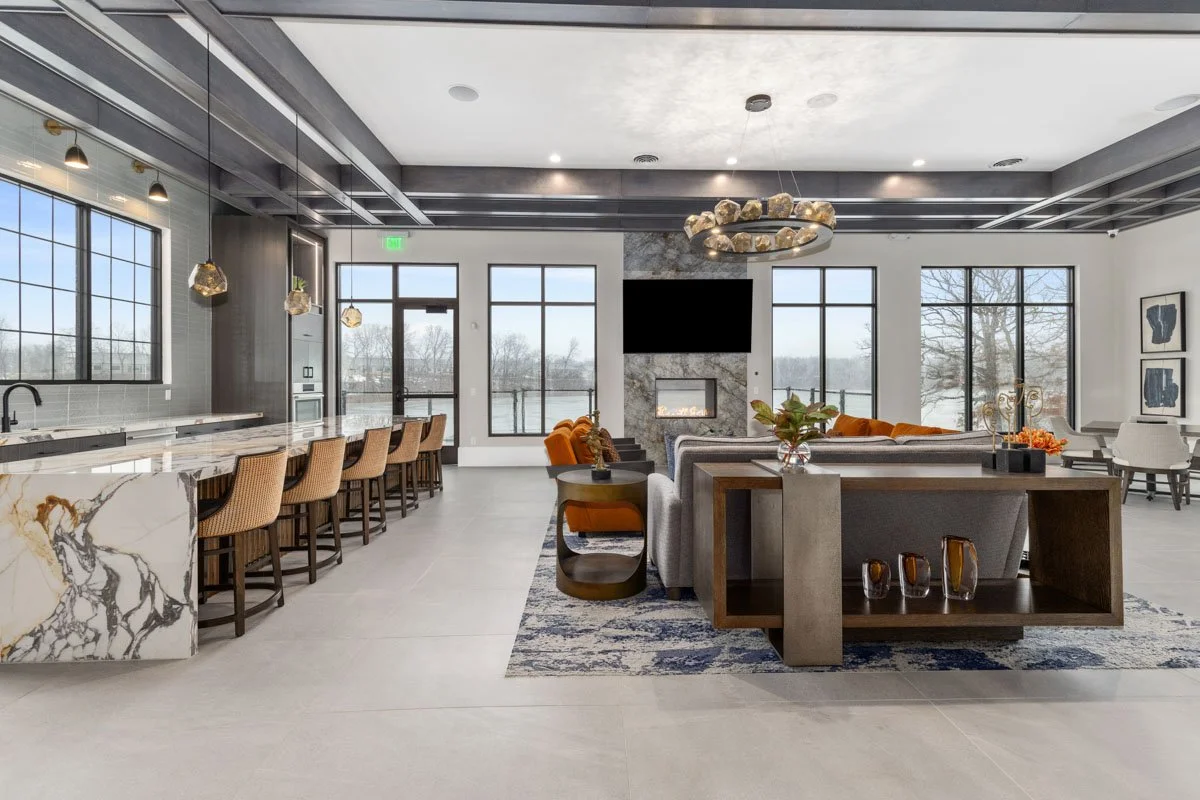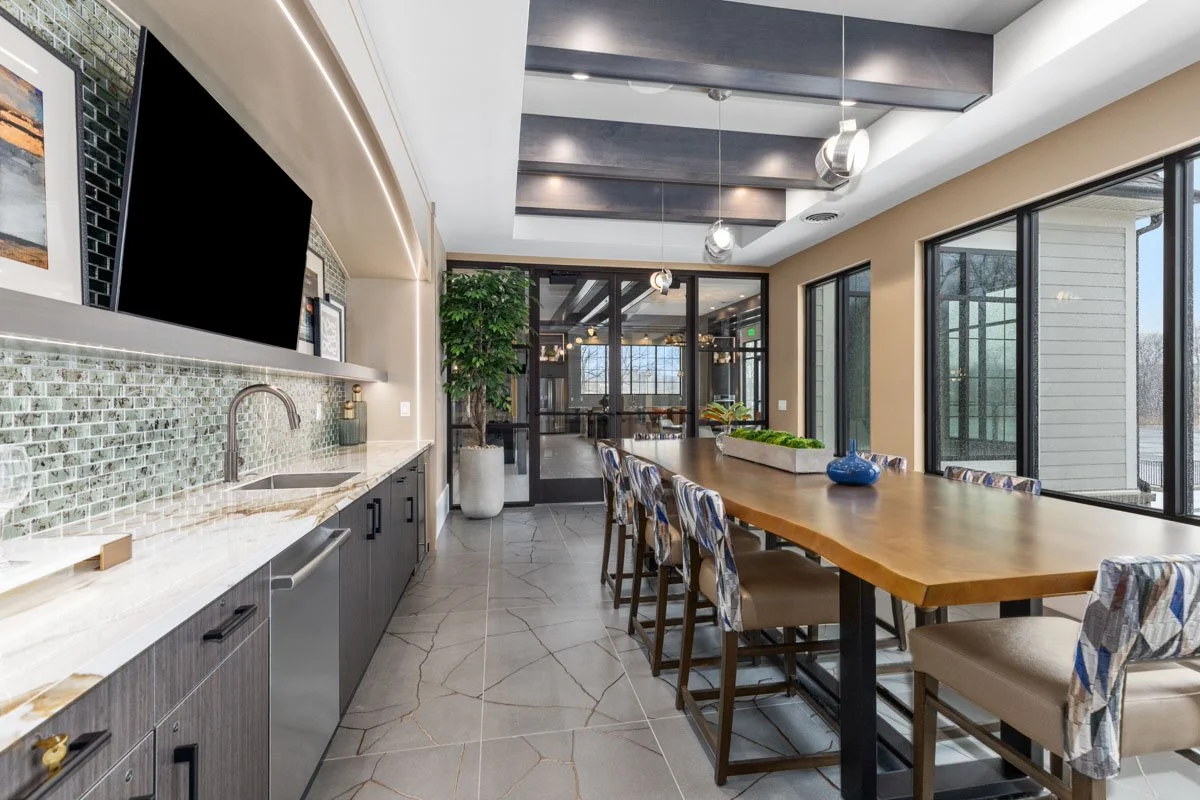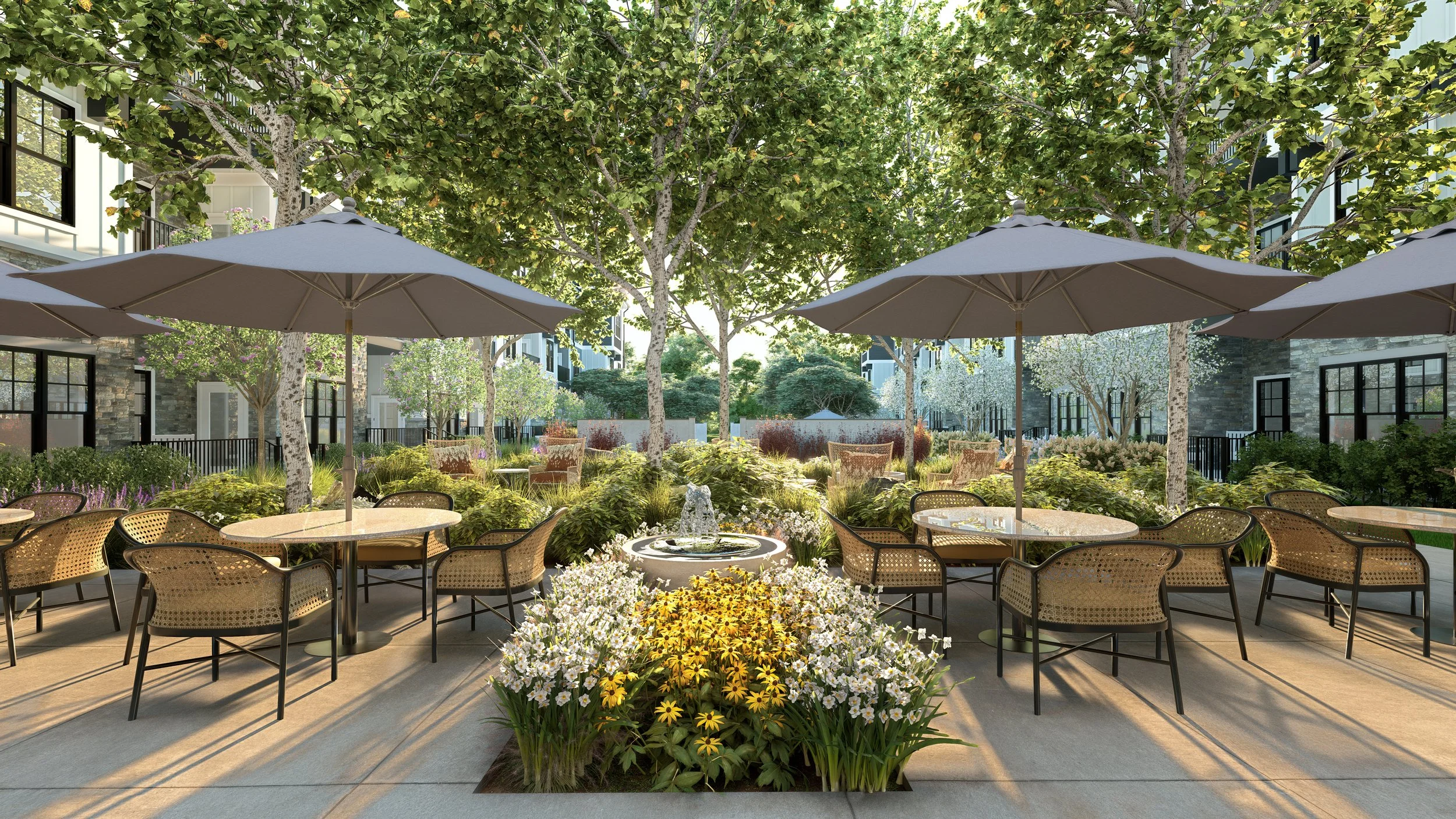Designing the Future of Aging: How Modern Senior Living Communities Are Changing the Industry
Senior living is no longer limited to a single model or design philosophy. It has evolved into a spectrum of lifestyle‐driven environments that honor autonomy, wellness, and individuality. As demographics shift and the expectations of older adults become more sophisticated, senior living developers and operators are looking to evidence‐based design to create places where residents don't just live but thrive.
As a design firm deeply rooted in evidence‐based methodologies, THD approaches senior living as an ever-evolving ecosystem. Today's challenge and opportunity are to adapt, innovate, and redefine what "home" means for older adults across a range of physical abilities, cognitive needs, personal preferences, and lifestyle goals.
From Active Adult to Multi-Generational Living
The active adult segment has been one of the fastest-growing in the senior housing industry, valued for its resort-style amenities and focus on wellness; however, recent market shifts show a new evolution: communities originally conceived as active adult are expanding into multi-generational or multifamily developments with an active adult emphasis. THD has worked with clients who began with an active adult concept and pivoted to include younger generations or mixed-age components, thereby broadening the demographic appeal while preserving the lifestyle focus.
According to a June 2024 blog by the National Investment Center for Seniors Housing & Care (NIC), Baby Boomers bring distinct preferences, including flexibility, choice, and lifestyle amenities rather than purely care-based environments. National Investment Center
Additionally, in 2024 the active adult property type was singled out as continuing to "boom." Senior Housing News
Design Implication: Spaces must be flexible, socially engaging, and aligned with lifestyle preferences rather than age alone. Independent living doesn't mean isolated living.



Duplexes, Casitas, and Residential-Style Living
With rising construction and land costs, many developers are turning to adaptive reuse projects, especially the conversion of hotels, motels, or other hospitality assets into senior living communities. THD has supported clients in such ventures, working on hotel-to-senior living transformations that leverage existing infrastructure, which helped accelerate timelines and offer amenity-rich spaces.
Industry research underscores this trend: a 2024 article from the real estate firm CBRE notes that hospitality companies are increasingly partnering with or converting assets into senior communities and providing living options. Another overview points out that adaptive reuse offers infill locations and lower land costs compared to new build.
Design Implication: Converting hotels allows for rapid market entry while offering unique opportunities to incorporate luxury amenities, centralized dining, and boutique-style common spaces that align with the expectations of a new generation of seniors




Adaptive Reuse: Re-imagining Hotels into Senior Living
With rising construction and land costs, many developers are turning to adaptive reuse projects, especially the conversion of hotels, motels, or other hospitality assets into senior living communities. THD has supported clients in such ventures, working on hotel-to-senior living transformations that leverage existing infrastructure, which helped accelerate timelines and offer amenity-rich spaces.
Industry research underscores this trend: a 2024 article from the real estate firm CBRE notes that hospitality companies are increasingly partnering with or converting assets into senior communities and providing living options. CBRE+1 Another overview points out that adaptive reuse offers infill locations and lower land costs compared to new build. Erdman
Design Implication: Converting hotels allows for rapid market entry while offering unique opportunities to incorporate luxury amenities, centralized dining, and boutique-style common spaces that align with the expectations of a new generation of seniors.


The Future: Dementia Villages and Day Programs
Perhaps the most transformative trend is the rise of dementia-focused communities designed not solely around care, but around quality of life. THD has recently been awarded a project that will include a dementia village combined with adult day care, enabling residents with cognitive impairments to live in a village-style environment rather than a traditional memory-care wing. Families and operators alike are recognizing that this is the next frontier in senior living design.
While not all statistical sources specifically break out dementia villages, the broader senior housing research supports stronger outcomes. For example, a recent executive summary from NIC & NORC at the University of Chicago shows that senior housing communities have achieved improved health outcomes and lower hospital stays when they are well-designed and well-operated.
Design Implication: Memory care is evolving into experience-centered living. The focus is no longer solely on safety—it is on dignity, autonomy, and emotional well-being.
The Common Thread: Lifestyle Without Compromise
Across every model—active adult, multi-generational, duplex-style living, adaptive reuse conversions, or dementia villages—one consistent theme emerges: older adults are demanding choice. And we at THD are uniquely positioned to offer that because we have designed or are designing each of these models.
Residents want environments that support their lifestyle, not define it.
1. They want independence, but not isolation.
2. They want safety, but not sterility.
3. They are embracing wellness, community, and purpose as essential to long-term quality of life.
As more research emerges on aging and longevity, the industry will continue to evolve, and as an evidence-based design firm, THD will continue leading that evolution. By designing with flexibility, foresight, and empathy, we are redefining senior living to meet the needs of today and tomorrow's expectations.
Conclusion
There is no longer a one-size-fits-all model for senior living—and that is the opportunity. Choice is now the greatest luxury, and design is the pathway to provide it. Whether through residential-style casitas, adaptive reuse of hotels, or dementia villages that feel like neighborhoods, THD is shaping environments where older adults can live authentically and age joyfully—without sacrificing the lifestyle they love.

